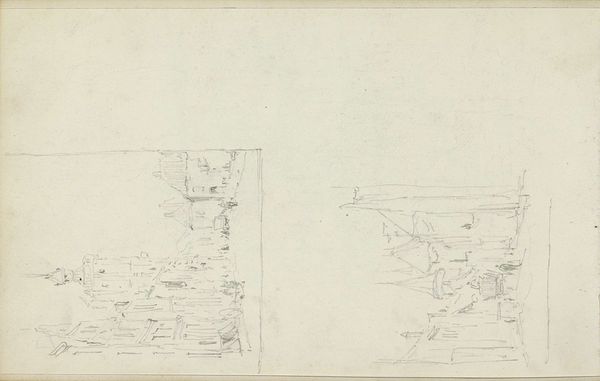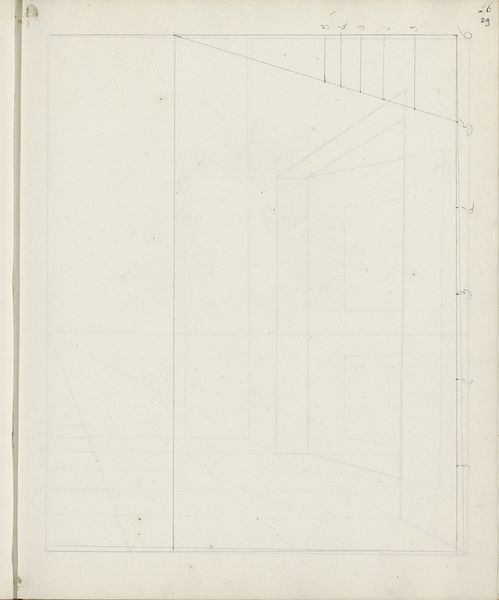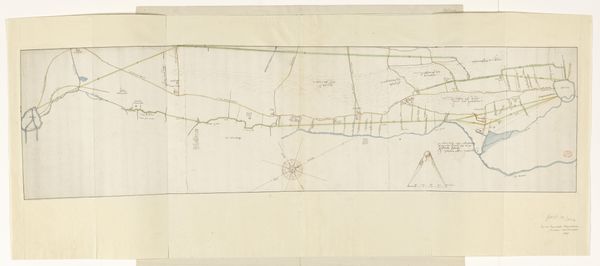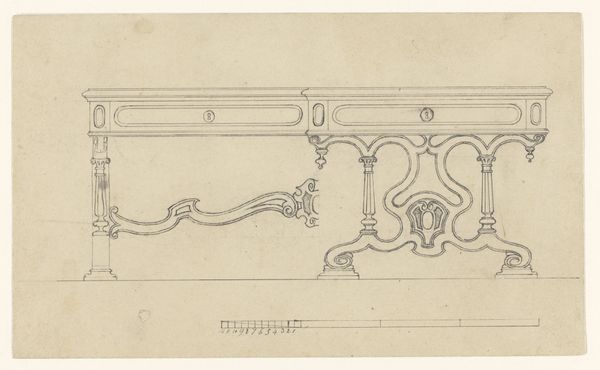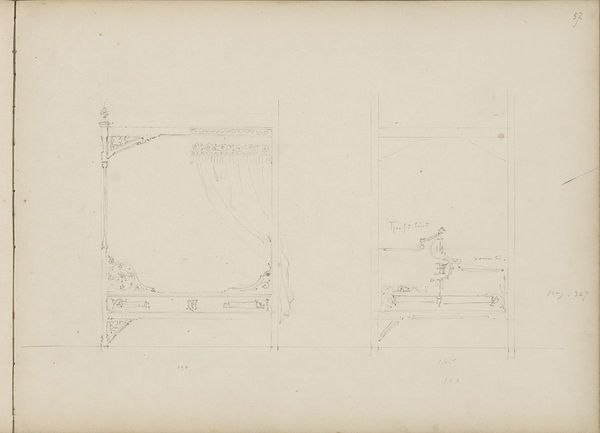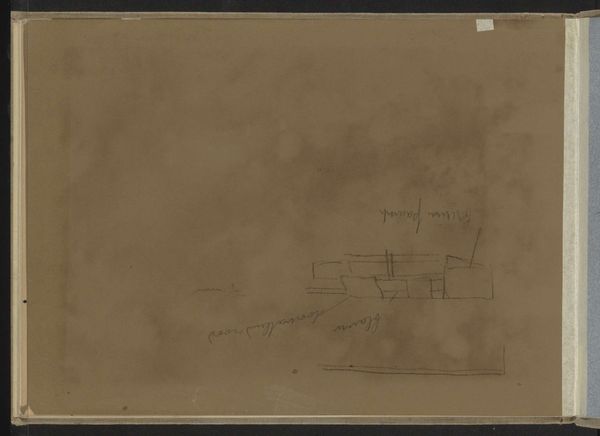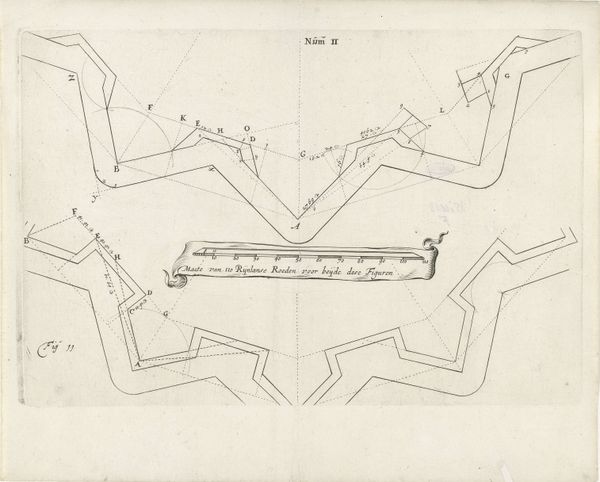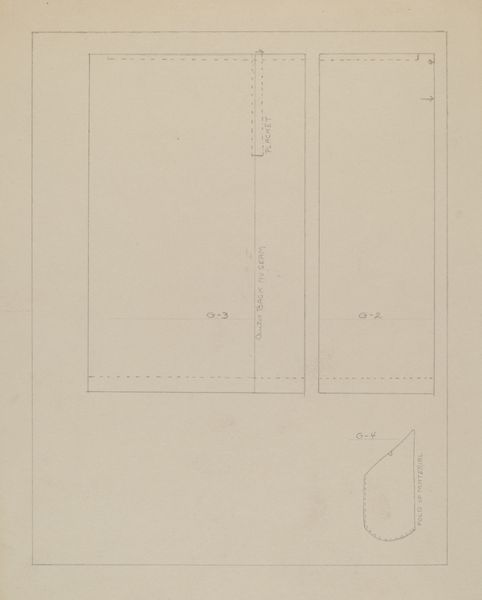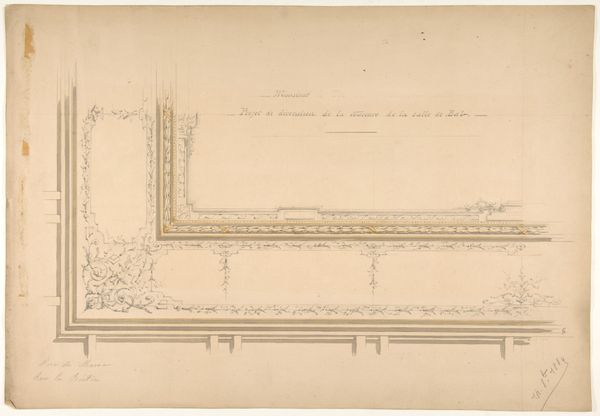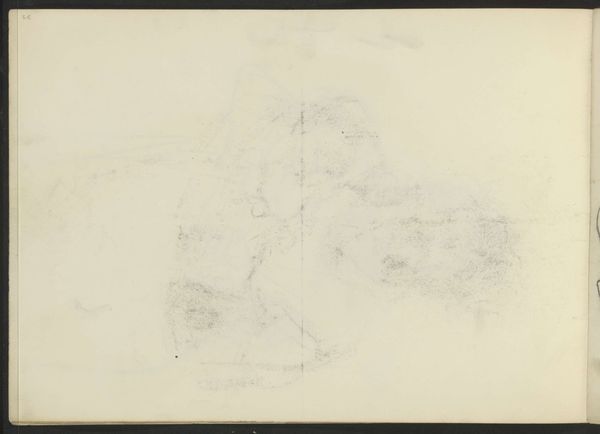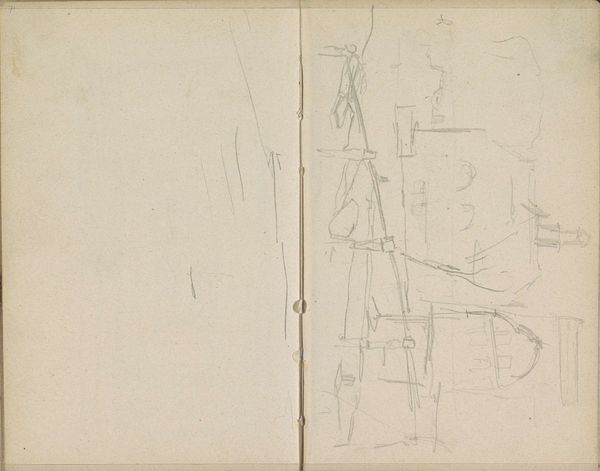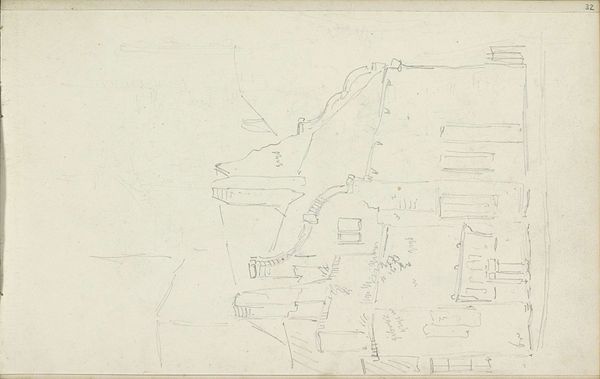
drawing
#
drawing
#
geometric
#
line
#
modernism
Dimensions: overall: 42 x 50.5 cm (16 9/16 x 19 7/8 in.) Original IAD Object: 8 1/4" wide; 14 3/4" high at the back; 9 1/2" high at the front, center; 7 1/2" deep
Copyright: National Gallery of Art: CC0 1.0
Editor: Here we have Harry Eisman’s “Knife Box,” a drawing from around 1940. It seems to depict three different perspectives on what I presume is a knife box. What symbols or stories jump out at you when you see it? Curator: My eyes are immediately drawn to the interplay between the rigid geometry of the box itself and the more organic, flowing lines that decorate its facade. The geometric shape feels modern, almost machine-made, and might represent the order, practicality, and efficiency of modern life at that time. Do you get a similar impression? Editor: Yes, definitely! It feels almost like an architectural blueprint mixed with something softer. Curator: Exactly! And what do the stylized curves and embellishments on the front and side suggest? Think about what kind of stories the objects this "Knife Box" holds might be associated with and then consider how its creator sought to "elevate" those stories. Editor: I see an attempt to give even something functional—a knife box—a sense of artistry and tradition. Perhaps that speaks to a longing for a more ornamented past, a kind of cultural memory. It's interesting how it seems to almost bridge different eras. Curator: Precisely. It's a dance between the streamlined future and the decorative past. Notice how those curved lines, while pretty, are carefully controlled; not allowed to break free of the plane, creating tension in the design. Where might we find knives presented with that sort of ornamental flare today, and how might that tell us what our society really considers worth putting on a pedestal? Editor: That tension you mentioned is powerful! It reflects the social and cultural dynamics of its time. Thinking about knives now, there is probably still that element of status that has been inherited over the centuries. Curator: Yes. Ultimately, Eisman’s "Knife Box" is more than just a design. It is a miniature stage of cultural symbols interacting, telling stories, as you put it.
Comments
No comments
Be the first to comment and join the conversation on the ultimate creative platform.
